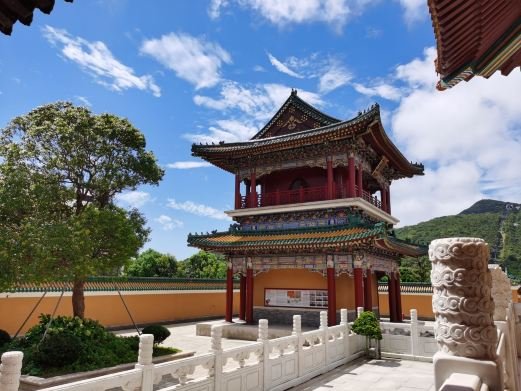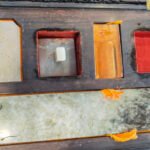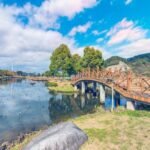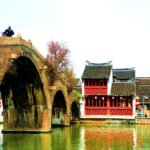Baotuo Lecture Temple is located opposite the Ten Thousand Buddhas Pagoda, near the lower station of the Foding Mountain cableway, and is a newly constructed temple on Mount Putuo in recent years. Due to its scale being similar to that of the Puji Temple, it is also referred to by many as the fourth largest temple on Mount Putuo. The newly built temple exudes an imposing and grand atmosphere; the entire temple is constructed along the mountain, with architecture in the style of the Qing Dynasty royal family, complemented by marble steps, creating a magnificent yet unpretentious appearance.
Transportation to Baotuo Lecture Temple is very convenient; one can take the island bus to the cableway station and then walk for a short while to reach the temple. The main structures along the central axis of Baotuo Lecture Temple, such as the Bell and Drum Tower, Heavenly Kings Hall, Mahavairocana Hall, the Great Lecture Hall, and the Great Treasure Pavilion, are designed in the style of the Northern Ming and Qing Dynasties’ imperial architecture, which is rigorous and exudes an inviolable dignity. The buildings on the eastern and western sides, such as the Abbot’s Court, the storehouse, and the monks’ quarters, are designed in the style of ancient southern architecture, adding a touch of approachability and grace to this sacred place.
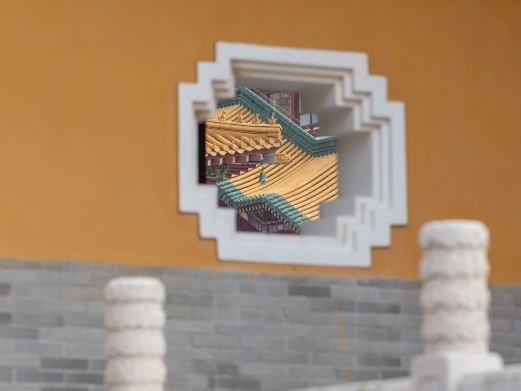
The temple’s major attractions include the Yuan Dun Precept Altar on the northwest side, which is the largest altar for receiving precepts in the Jiangnan region. Another highlight is the Baotuo Grottoes Buddha statue, which is exquisitely crafted and modeled after the Longmen Grottoes in Luoyang. From the higher points within the temple, one can enjoy an excellent view. Although Baotuo Lecture Temple has only recently been completed, it has already become a thriving place for worship. Tourists often include it as a stop during their visit to Foding Mountain. After visiting Baotuo Lecture Temple, one can take the cableway up to the summit of Foding Mountain, visit Huiji Temple at the top, and then descend along the Xiangyun Road. Fayu Temple is not far from the base of the mountain. The opening hours and specific business status are subject to the temple’s daily opening conditions.
